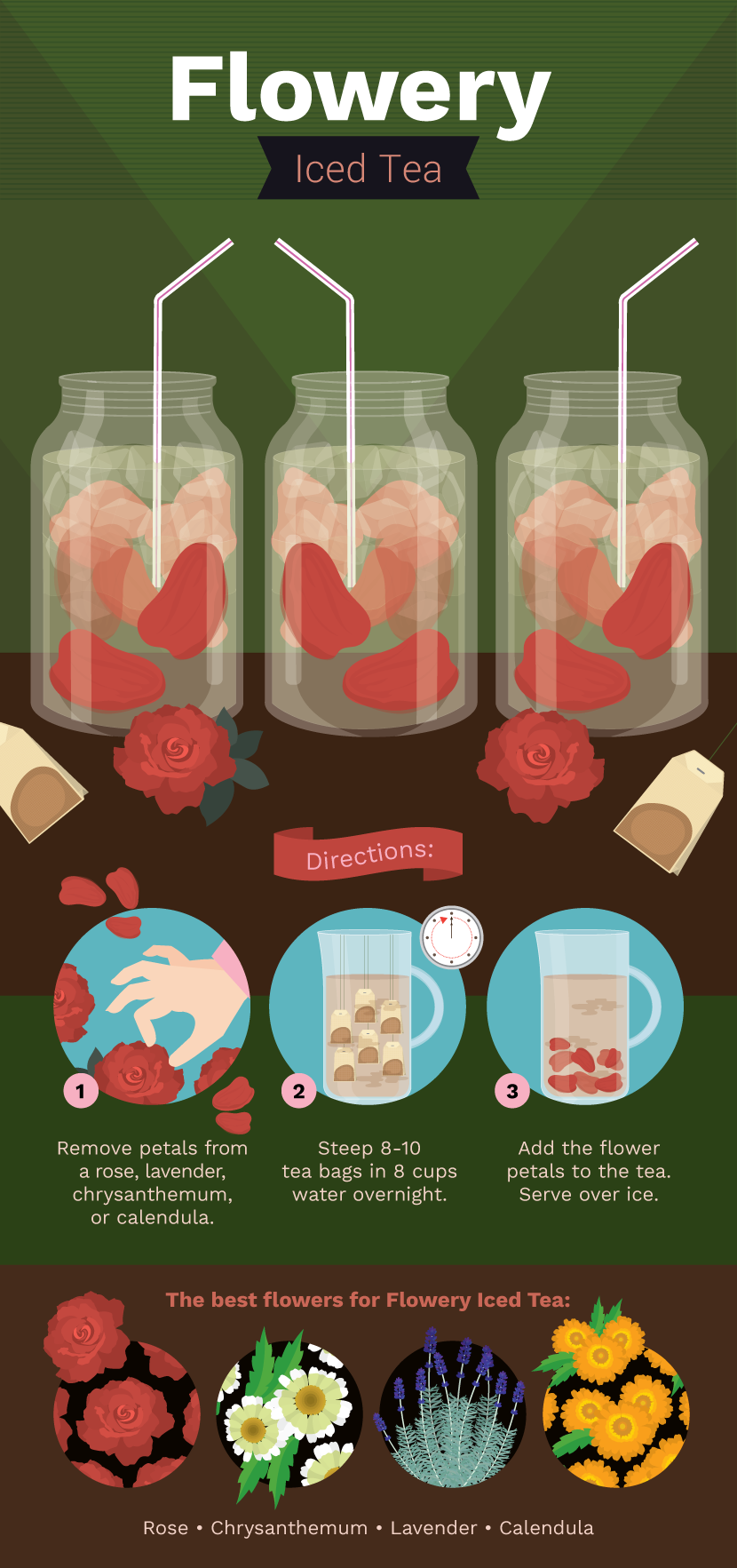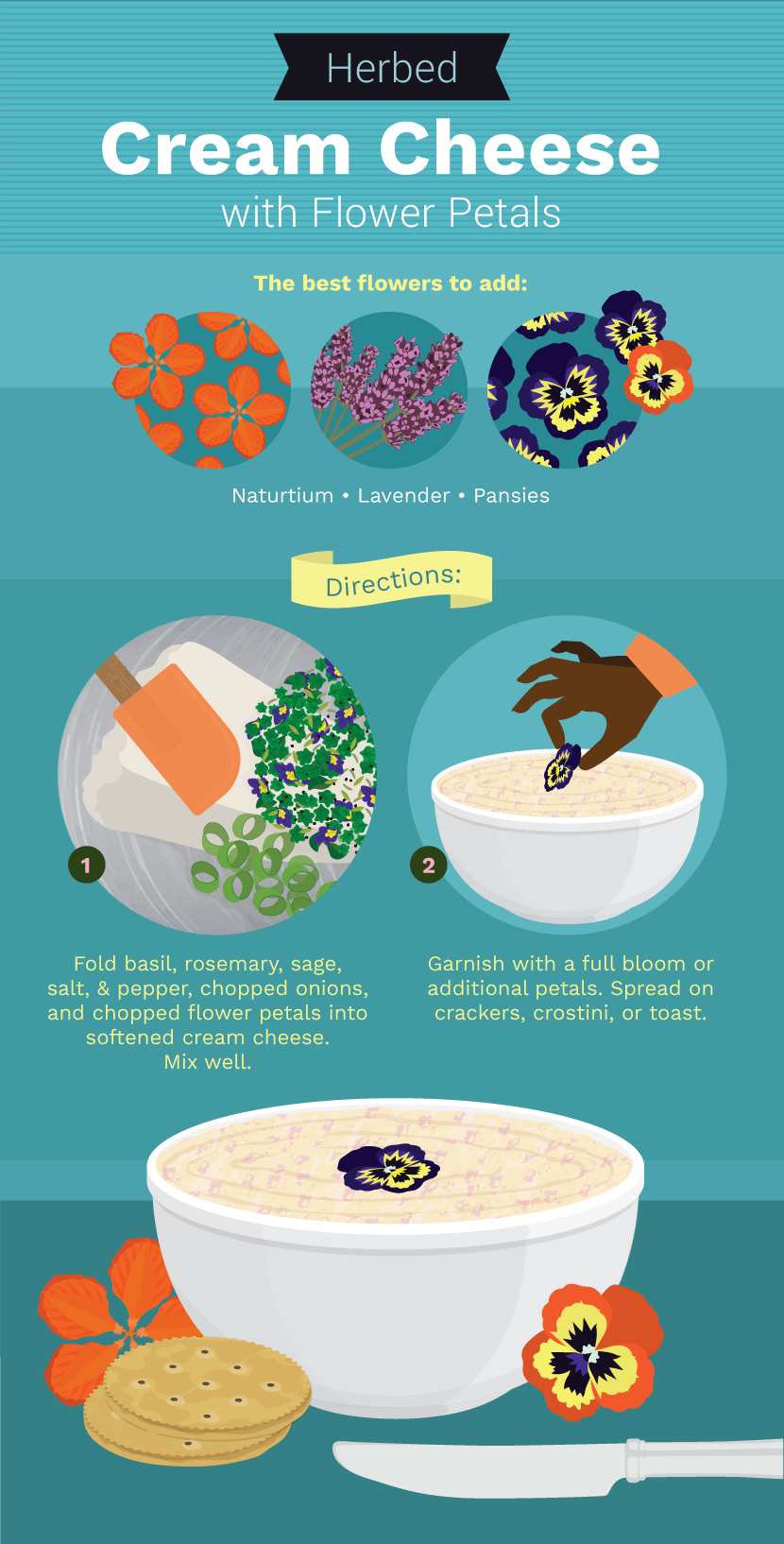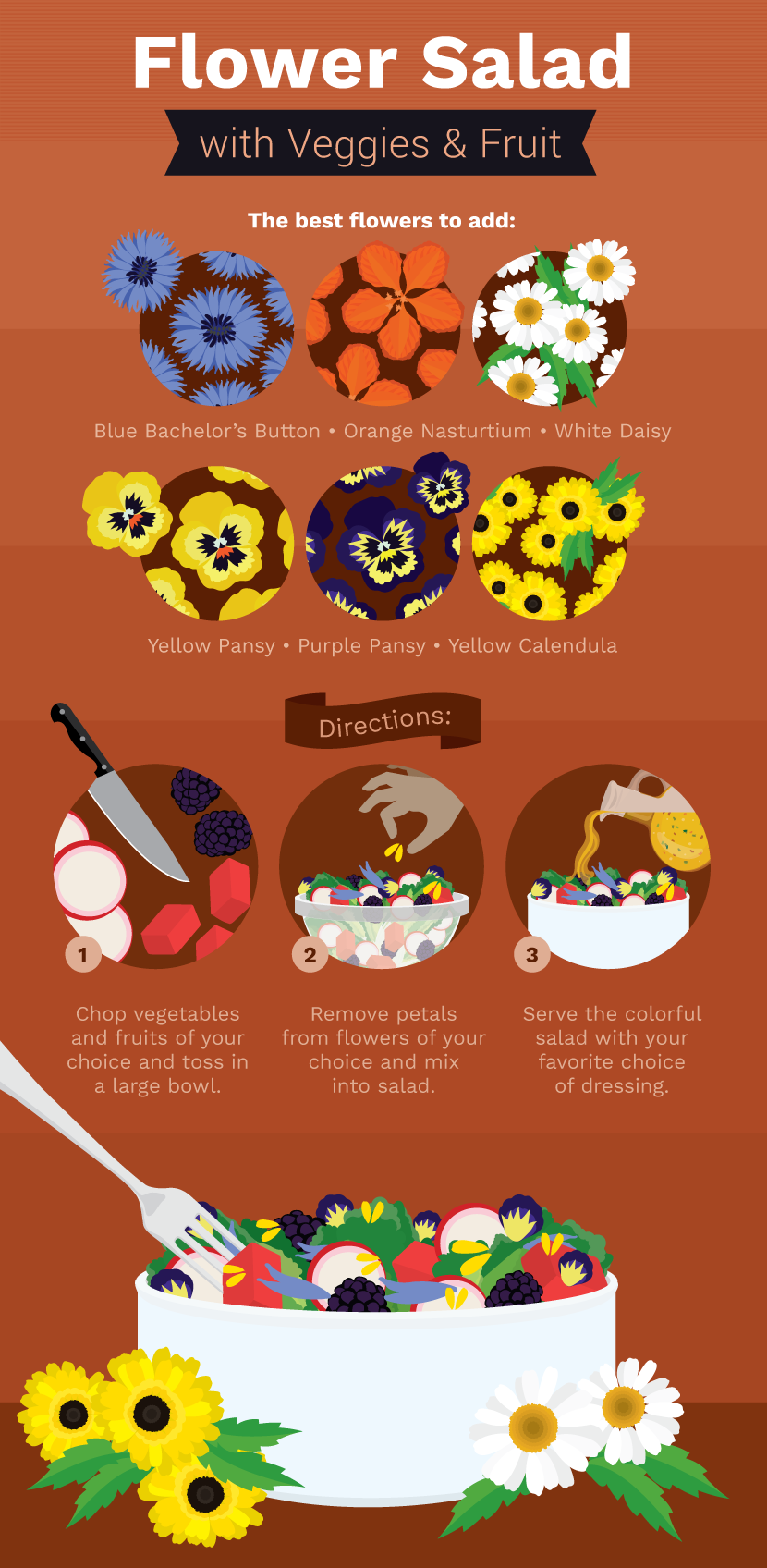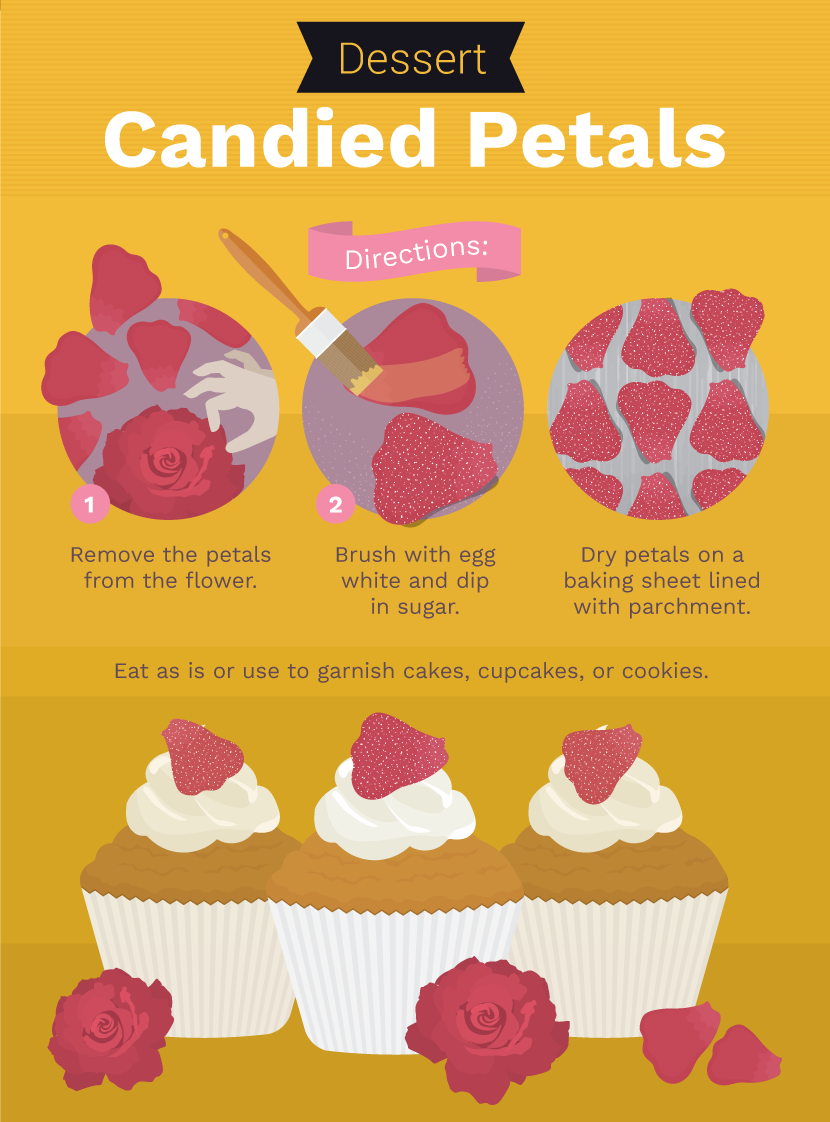Make Your Meals Blossom With Edible Flowers:
4 Ways to Incorporate Flowers into Your Meals
The world of edible plants extends far beyond the produce aisle, contrary to popular assumptions. You might be surprised to learn that flowers such as roses and tulips are as edible as a stalk of celery.
These edible blooms can greatly improve the appeal of simple dishes by adding a beautiful dose of color, flavor, and aroma.
Most associate the use of flowers in food with expensive, gourmet dishes. It’s not every day that you can find them in the average consumer’s meal, after all. Yet, edible flowers have been used for centuries.
There is a strong history of medicinal and culinary use of flowers in the time of the ancient Greeks, Chinese, and Romans.
Edible blooms were also used during the medieval and Victorian eras.
Thanks to the Internet, the mainstream culinary world has gradually discovered the hidden potential of edible flowers. It’s becoming easier for the average foodie to access edible flowers and learn about ways to use them.
The best part is that no fancy tools, techniques, or skills are needed. It’s all about simple ideas and concepts.
“Using edible flowers is playful and unexpected, especially in today’s mainstream food,” says Lorena Cortez, founder and main florist of Home Sweet Flowers, a florist company based in San Francisco.
“It automatically entices curiosity, draws them in, and is sure to put a smile on someone’s face.
Before you get started, take some time to learn precautions about consuming edible flowers. According to Cortez, it is imperative to avoid buying flowers for consumption from a floral shop or flower mart unless it is clearly labeled as “organic.”
If possible, go straight to the actual farmers or even try growing your own blooms. This is the only way you can be sure that the stems haven’t been grown with dangerous pesticides and chemicals.
Even when the blooms are deemed safe for eating, it’s extremely vital to wash them thoroughly. With the exception of a few stems, the petals of most flowers are typically the only part that can be eaten.

When it comes to the summer heat, iced tea always saves the day. Keep it looking as cool as it tastes by tossing a handful of edible flower petals into a large, clear pitcher.
This trick requires absolutely zero fancy skills. It’s an effortless way to transform ordinary tea into a beautiful, inviting beverage.
Start with 8 cups of water in a pitcher. Steep 8-10 tea bags or 6-8 tablespoons of loose tea, depending on your preference. Green or white tea is your best bet; these are light enough to let the flavor of edible flowers shine.
For best results, steep overnight. Create your own combination by adding fruit teas such as raspberry or peach for full-fledged summer vibes.
You can also add mint, lemon, or honey for extra sweetness. Choose flowers that are light and sweet such as rose, lavender, calendula, and chrysanthemum.
Over time, the flavor will gracefully infuse into the tea while creating a beautiful visual.
This drink hack isn’t limited to iced tea. Edible petals can also be added to lemonade, cocktails, and infused fruit waters.
Take note of contrasting color combinations for the ultimate visual treat. For example, Cortez suggests adding lavender to lemonade to create a pop of pizzazz.

Few things can please an entire crowd like a dish involving a fancy form of cheese. Fortunately, taking this on doesn’t have to cost a pretty penny.
The secret is to take ordinary cream cheese and bring in spices, herbs, and edible flowers for a major burst of flavor.
It’s an easy upgrade that requires very little effort.
Start with cream cheese softened at room temperature. Fold in your favorite spices, herbs, salt, and pepper. Oregano, parsley, and rosemary are all ideal options. For a stronger flavor, bring in chopped green onions.
Add chopped petals according to your flavor and visual preferences. Nasturtium tastes slightly peppery and works well for savory cream cheeses.
It will add a stunning pop of yellow and orange hues. Lavender and pansies, on the other hand, are slightly sweet but work well for savory cream cheese.
To serve, place it in a small bowl with a butter knife. This pairs extremely well with crackers, crostini, or toast. Serve it as an appetizer, side, or snack.

Salads serve triple duty as an appetizer, side dish, or entrée. Bring in edible blooms and you’ve got yourself a gorgeous dish. Like tea, creating a salad with edible flowers requires very little extra effort.
Create a salad as you normally would. Kale, arugula, and spinach are flavorful crowd favorites. Add a sprinkling of vegetables such as mushrooms and tomatoes.
Throw in some fruits, like strawberries and oranges, for a summery touch. Lastly, toss in colorful petals. Roses and carnations will add a sweet flavor to otherwise simpler salads.
Cortez suggests bachelor’s button petals for a vibrant sprinkling of blue. Alternatively, sunflowers and daisy petals are quite bitter. These are ideal for toning down sweeter salads with fruits.
Whole blooms can be used solely for decoration and must be removed or plucked before consumption.
However, Cortez mentions that pansies and violets are an exception. Both blooms can be eaten full, doubling as potential décor for your salads.

Sweet treats such as cakes, cookies, and cupcakes are a pleasant addition to any menu. While desserts are often embellished with artificial colored icing, you can opt for more wholesome options.
Along with fruits, edible flowers offer a more natural touch than sugary frosting.
The easiest way to decorate desserts is to sprinkle powdered sugar and top it off with a few petals. Lavender, pansies, and violas are especially lovely for dessert toppings.
For a fancier take, make candied petals. These can be eaten alone or used as garnishes for desserts. Start by brushing flower petals with egg white.
Dip each petal in sugar and leave to dry on a metal baking sheet lined with wax paper.
Once dried, a striking crystallized layer will have formed on the petals. This idea works best with sweet flowers such as violet, rose, bachelor’s button, and tulip.
Thanks to these ideas, creating gorgeous floral dishes has never been easier. Don’t be afraid to experiment and combine edible blooms with flavors and ingredients that you already love. You never know what you’ll come up with!
Embed the article on your site

